Flexibility is an issue that many embryonic physical culturists ignore until it is too late, when injuries or athletic mediocrity have already occurred: stretching, mobility and flexibility may be of a secondary importance to the physical man, but it is still a goal worth pursuing.
Why Stretch?
Some of you might be groaning already, saying that this is predominantly a “woman’s goal” of fitness, citing the always-prevalent female desire to “tone” and “lengthen” muscles without adding bulk. And while stretching certainly accomplishes these things, there are many benefits specifically for the masculine man, such as:
1. Improved Posture
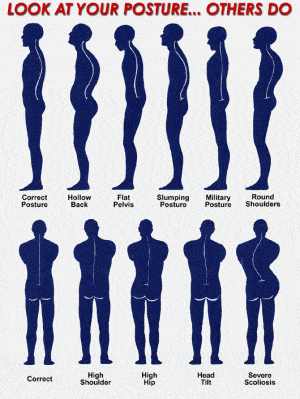
Much fun is made in these circles of “hunched over beta males” with sloping shoulders, a high degree of swayback, and other effeminate body language. A variety of stretches for the chest, shoulders, hip flexors, hamstrings, and glutes (several of which will be discussed later in this post) can have you standing like the tall, confident alpha male you’ve always wanted to be.
2. Increased Athletic Ability
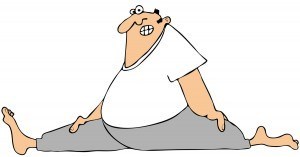
Having contracted, atrophied muscles leads to the posture issues detailed in the previous number, and muscular atrophy comes from disuse. That same atrophy leads to decreased physical aptitude. And if you don’t believe me, I’d like to see you try to deadlift, sprint, or jump with lower back pain caused by hyperlordosis, which is in turn caused by atrophied hip flexor muscles. After you try and fail at that, do a bench press or throw a punch with proper form due to your sloped, inward-facing shoulders. And finally, try to throw a high roundhouse kick so we can all laugh at you.
3. Increased Mental Fortitude And Tolerance To Pain
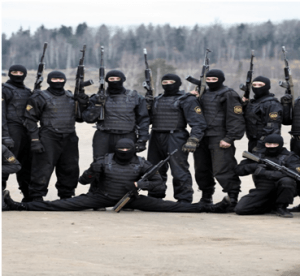
A stretch properly done is a slow, gradual, arduous process. This is to avoid over-stretching and injuring the muscle in question, but also as a strictly mental, almost meditative exercise. The goal of fortitude is what has traditionally made kung fu schools force their students to perform the horse stance (ma bu in the original Mandarin) for several minutes at a time, although the horse stance is not strictly a stretch. Similarly, the Russian spetsnaz forces their recruits to learn how to do splits (both the front split and the “wishbone” side split) for the exact same reason. Simply put, if you’ve gritted, gnashed, and sweated through a wishbone split, you won’t fear much in the way of pain.
4. Increased Sex Appeal
This is mostly a byproduct of the previous three steps. Speaking personally from experience and observation, women are certainly not adverse to seeing a muscled, masculine man perform a full bridge or a split. If you can pull off some of those moves on the dance floor, even better.
Stretching is a field of training that requires just as much progressive training as weights or calisthenics. The trainee should begin with the basic stretches that you probably remember from elementary school, before moving onto intermediate stretches (bridges, twist holds, etc.) and the advanced stretches (splits, scorpion holds, and other movements that seem unreal to the uninitiated). This article will only go over basic stretches to increase mobility in preparation for the intermediate stretches, but first…
Commonalities For All Stretches
Without going into too much anatomical detail, let me just say that a properly done stretch applies the pull to the muscles rather than a tendon or ligament. Muscles evolved to move, pull, contract, agonize, and antagonize. Ligaments attach bone to bone and tendons attach bone to skeletal muscle, both of which are tough connective tissues that evolved to basically keep things in place. They are made of collagen, which is meant to withstand and “hold fast” in response to tension, not stretch and move in the direction of the tension.
Stretching, thus, essentially, conditions the muscle fibers to their maximum plasticity and elasticity (for those who don’t remember physics class, plasticity is the capability of being stretched, elasticity is the capability of returning to the original length once the pressure is taken off). If you feel any pain in places you know joint tissue exists such as the hip sockets, the spine, the groin, the ankles), you’re doing it wrong. Try again with proper form.
Related to the above, there is nothing between your two legs. A lot of people will tell you that there’s some sort of ligament or muscle between the two legs keeping you from doing splits. That’s a lie. The reason splits, or any stretch, are difficult, is because your muscles are reflexively resisting the stretch, and this is normal. Much of flexibility training is gradually training your body to not use that reflex.
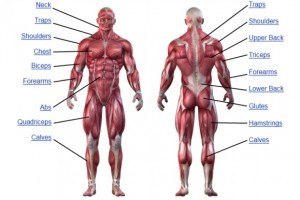
Stretching is a workout all its own. We’ve all seen that tubby guy at the gym doing gimpy stretches that accomplish nothing at the gym. Don’t be that guy. Personally, I do my stretching after martial arts practice, and not before or after heavy lifting or calisthenics (with two major exceptions I will specify). You can stretch whenever you want, but bear in mind—if you are not pouring sweat, and your heart isn’t pounding after your stretching is complete, then you’re not stretching right. Remember the third reason of why stretching is relevant to you.
The contraction reflex can be overcome, and there are many methods of doing so, ranging from “waiting out the stretch” (essentially holding a stretched position until the pain goes away, then extending, and repeat until it doesn’t work anymore), to getting into a stretched position and flexing the stretched muscles for 20-30 seconds to basically exhaust them into stopping the contraction reflex, and more. Those are the two main methods I use, and there are several variations of “forced relaxation”, AKA the contraction method, and:
Finally, breathe regularly. In my experience, holding your breath or breathing shallow leads to muscle cramping, which of course impairs your flexibility. But don’t breathe too deep either, just breathe smooth and regular.
Most of the information in this section was gleaned from the works of “The Mad Russian” Pavel Tsatsouline, a former Spetsnaz who defected to the USA in the late 1980s, and became a highly regarded fitness trainer and writer. More specifically, his book “Relax into Stretch” (Dragon Door Publications, 2001). I highly recommend it if you desire more in-depth information.
A Beginner Stretching Routine
1. The Bow Stance
This works the hip flexors, making your hips more mobile and flexible. Put one leg behind the other, as far as it can go while keeping the back foot flat on the floor. Keep the chest and back straight and vertical. Bend the front leg, go until parallel. Keep pressure on the back leg. The stretch is felt in the hip and groin, and as always the back is kept high and straight. Switch legs when done.
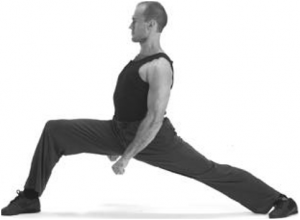
2. The Floor Hamstring Stretch
This is one we all remember from elementary school. Sit down on the floor, and extend your legs fully. Keep the feet together and pointed straight up, keep the chest and back high and straight, and bend at the waist, reaching your arms to your feet. I say “arms” and not “hands,” because training can enable you to reach your hands beyond your feet, as seen in the picture.
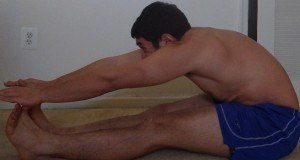
3. The Bridge
This is one of the two stretches I do after weightlifting rather than martial arts. Possibly because it’s half stretch, half calisthenic. It’s also one of the best exercises you can possibly do in general. It is ubiquitous in a variety of physical disciplines, from yoga to wrestling. It works the seldom-exercised erector spinae, tones the arms and legs, expands lung capacity, promotes circulation and, most importantly, rejuvenates and expands compressed or dislocated vertebral discs. To put it bluntly, if you’re not already bridging, get to it.
Lay down flat on the floor, put your hands on the floor behind your head, and push up simultaneously with your hands and feet. More than just getting your back off the floor, a proper bridge has four components: 1) Straight arms and legs, 2) An arch in the back, 3) The head tilted back in a relaxed position, and 4) Breathing is natural and deep.
Once this is mastered, there are more advanced bridges, culminating in falling into a bridge from a standing position. This is largely where the bridge stops being a stretch and becomes a calisthenic, a topic which I have already discussed on this website.
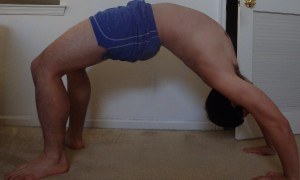
4. The Hang Stretch
My other post-weightlifting stretch. Hang from a pull-up bar, with arms fully extended and the breath held, then, let the breath go in one gasp, and let your body sag. You should feel the stretch in the back muscles. Helps your posture as well.
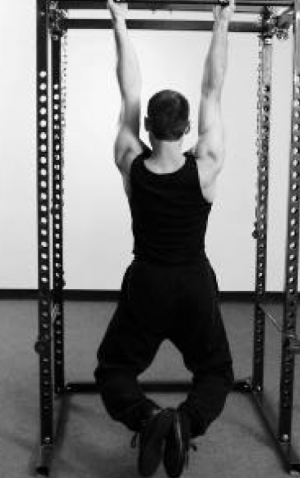
5. The Chest Stretch
Put your feet together and stand straight. Then clench the buttocks and thrust the hips forward, while keeping your back as straight as possible, lean your head back and look at the ceiling, and spread your arms out and as wide as possible (do NOT lock the elbows). This expands the chest and shoulders, reduces “droopiness” of the neck, and reduces hyperlordosis in the lumbar as well.
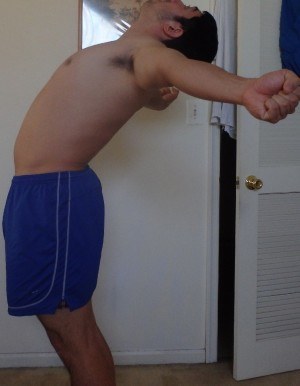
6. The Floor Hip Flexor Stretch
Put one foot on the ground, and one knee on the ground far behind. Then lean forward on the front leg, keeping the back and chest high and straight (I repeat, do not move your torso at all), while putting pressure on the hind leg. You should feel the stretch in the hip flexor of the hind leg. Then switch legs and repeat
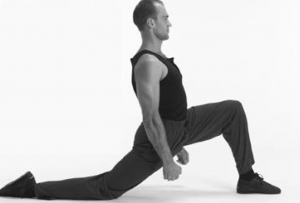
In Conclusion
As mentioned before, I do various stretches after weightlifting, calisthenics, and martial arts. I perform all of the above stretches at some point in the week, as well as some more advanced ones. Some of these I use to warm up, and some of these I do afterwards. Having hopefully convinced you of the need to stretch, try these and see if they improve your athletic game. Be safe and see you next time.
Read More: 5 Pre-Workout Tips For Consistently Better Workouts
Thanks. I’ll pay more attention to stretches from now on.
Solid article.
This is the only reason I would consider yoga. Ok, that, and flexible babes in Lululemon gear.
https://cdn.meme.am/instances/50057803.jpg
Ha. Yoga class is great. Find one that isn’t all fairy faggot and is serious about stretching you out. Also hot yoga once in a while really helps with muscle fatigue from lifting.
And yes, the lulu brigade. Doesn’t get any better. I love when you walk into the lulu store how there is always a greeter who is like a solid 9 in a very skimpy outfit with a huge smile to say hi. I think she chases out the cows.
“Hi my name is Brandi! I’ll be your fat shamer today”
God I love lulu
There are definite benefits to yoga but it can lead to imbalances and is contra-indicated for some people (such as me).
The thing that annoys me most about Yoga people though is that they think it heals all ills. It doesn’t.
Agreed. Yoga people are often the most obnoxious in the world. I don’t mean the cute idiots who just like the outfits and green juices, they are amazing, but the yoga is life dip shits.
There is a place here that has two studios, one hot and one regular, and you can buy a 5 pack of passes for a good price. There is one chick who treats it as a straight up balance and stretch and that’s great and the hot one does wonders for sore muscles. I am talking once a month though, not as a routine
its because yoga has been completely co-opted by the liberals. everything and everybody is “one”. People in western yoga studios don’t have boyfriends/girlfriends, they have “partners”. yet they fail to recognize the shiva and shakti that is seen throughout the hindu literature which represents the “male” and “feminine” energies. now if i go teach a yoga class to men in the states and look to enhance their male energies, I’d probably be thrown in jail for holding an all male, sexist class. this is what real yoga looked like back in the day in india under the great guru krishnamacharya, a true yogi bad-ass:
Hot yoga isn’t cheap. Well, im sure its *relatively* more affordable in NYC where there is a yoga studio right next to every cobbler. But I did it for 2 months straight (local studio gave a 1 month cheap unlimited class pass and then I paid for a second month package). I found there were advantages to going often. Perhaps after you master it, it’s not necessary to go as often, but I found after about 6 weeks of going ~4 times a week to hot yoga, something snapped and I was at a whole different level. Maybe once you reach that level of mastery, one can benefit by only going a couple of times a month, but for me the effects were cumulative. (This is from an intermediate yoga guy but new to hot yoga).
True dat. But I get a 5 class package good for 3 months for 100 bucks which isn’t terrible I don’t think. I really use it as a stretch and relax but it’s stupid expensive if you go all the time.
Nice cobbler reference
It’s also been coopted by the feminists. I work out at a gym that rotates instructors heavily. I’ve had 3 great yoga instructors, all male. I’ve had ONE great female one. Then I’ve had half a dozen other female HB 8 and 9s who were only great for visually motivating me to come to their mediocre class. One of the guys is the most flexible person I’ve ever seen outside of Cirque du soleil. Most yogis are men, the guy who invented hot yoga is a man, etc. But in America, most yoga practitioners are chicks. The same is true of Pilates (invented by a dude).
Just like Cross-Fitt nutters, always has to be the extreme, occupied by the same types.
Once a month session with a Sports Chiro-practitioner and Sports Massage Therapist [Male where you can], worked wonders for me, the right Yoga class can be a very good work out.
As for maintaining posture, stretching helps a lot, one Ex told me that I have a presence when I enter a room or conversation, just from posture that few other men have. That said it can come across as being arrogant and intimidating to lesser ones.
I’ve always wanted to try sports massage but never have. Maybe I’ll give that a shot.
As for arrogant and intimidating…I say go with it
lululemon is a great place to get a $50 t-shirt and $100 sweats.
No joke. When mine opened, I wanted a decent outfit just because my shirt was always hanging down, obscuring my view of the other hard bodies when we did downward dog, and I stopped by. They were open like 4 days a week *by appointment*. That was when I knew they were out of my budget.
Toughest workout I ever had was a ninety-minute yoga class (packed shoulder to shoulder) taught by a former drill instructor in the Israeli army. I passed out afterwards. She was merciless.
The coffee shop I use for the wi-fi is next door to a Yoga school. Great scenery!
Just a dynamite article. Really, really well done. I would love to see a whole series of articles where you go more into depth with stretching routines. Bravo dude.
Very good.
It’s very beneficial to stretch,
but please do it carefully.
As soon as you feel discomfort relax into a neutral position, then stretch again. Do not keep a stretching position at the point where you feel discomfort and pain, because at that point the body goes into “contraction” mode to protect the fibers. Go step by step little by little or you will create tons of microruptures in the muscles and possibly in the ligaments and their attachments, which the body will try to heal by contracting the muscles, thereby getting the opposite effect that you are trying to acheive.
A good rule of thumb is to stretch to the count of two and relax, breathe. Then do the same stretch to the count of 2 or 3 and relax. Breathe. Then again, as long as there is no discomfort, for 3, 4, 5 or more repetitions as you like. In a few days you will notice a big difference in your stretching abilities without having incurred any injuries. Keep breathing fully and freely before and after the stretch, if possible before the stretching sessions breathe in and out fully 30 times if you have not done any cardio before. This will allow the whole body to be filled with oxygen and the stretching session will be more beneficial. During the stretch you can play wth holding the breath, breathing out, or breathing in. Experiment! You will notice interesting differences and results.
WARNING: be careful in performing the “hang stretch” as it has been described: if you do not hold the muscles of the shoulder girdle firm and tight you could very likely sooner or later dislocate the shoulders and/or trear/break and/or rip the shoulder rotator cuffs cartilages off from their socket.
Conclusion:
Stretch, yes. But like with everything else, keep safe and remember you have only one body, so take care not to injure it. Injuring it is easy, repairng it it’s a bit more difficult. And sometimes impossible, and for the rest of your life.
I had been weight lifting for years and took yoga on a lark to do something different, if “gay”. Holy shit, yoga is legit. More painful than weight lifting in some ways. it ironed me out pretty well and fixed issues I had for years.
I also went to a local yoga studio to check it out, 9/10 ppl there were young men and for good reason. Stretching and yoga are legit. Get a hard yoga class and go for it. you know it’s hard when you’re 10 minutes in and looking at the clock thinking it’s been 60. Some softy yoga doesn’t do shit. If this stuff extended Diamond Dallas Page’s career it can do half as good for you.
i used to think the same thing about yoga. then i tried P90X and about 15 minutes into the hour and a half long yoga work, i felt like i was going to die. i’ve gotten bored with yoga since then, but i should give it a go again because it’s a great compliment to weight training.
That’s the problem I have with yoga. It takes so fucking long.
yeah, i’ve gotten used to workouts with weights that last 25 to 35 minutes. most yoga classes are about an hour. better if a cute girl sets up in front of you, but generally too long.
speaking of that, i know you’ve recommended convict conditioning to me and a few other guys on here. how long do the workouts take? i’m interested in trying it, but with my work schedule it’s tough to do any kind of workout that takes much more than a half hour.
You can get them done in half an hour.
The problem I always had with the yoga DVD from P90X is it always seemed to be scheduled the day after arms and shoulders and the first 45 minutes of yoga focused on movements from the plank/pushup. They’re already fatiqued and sore! Give them a break.
i felt like P90X overtrained you a bit in general. the original program is too repetitive too, in the sense that you’re doing the same workouts over and over for three months, including the stupid kenpo X workout (i usually recommend just skipping that one, or doing MMX from P90X3 instead).
P90X2 was a flop for them, but i thought it was much better. much more variety, more efficient workouts, and five workouts a week instead of six. i felt like i was getting steadily stronger throughout the whole program, and i got better results.
The only issue I have with yoga is the spirituality of it. Other than that, the stretches are amazing and really helped my posture when I did it a few years back.
Nothing wrong with a little spirit…
Haha good pic. I agree. It’s just the wrong type of spirituallity for me. I am catholic, and yogis try to involve a more buddistic/yen approach to spirituality.
You can take the spirituality out of it. It doesn’t belong there anyway. It is a mind/body discipline, perhaps developed by Pythagoras, co-opted by religions like Hinduism, Taoism, etc. If you couple the practice with autogenics, it’ll change your life. Women don’t get the mind part, they just know it’s gets them into game shape to catch men. I’m Catholic, and do visualization exercises about improving my health and mentality (along the lines of Stoicism) and then do Yoga. It’s helped me a great deal.
I did hot yoga for a few months after I had shoulder surgery. It’s definitely a great workout and will get your body sore the next day as if you did a heavy weight lifting day.
Make sure you try some mobility work to avoid imbalances.
what are some mobility exercises and what do you mean imbalances?
Well for example, if you sit all day, your hamstrings will be in a state of chronic contraction and your quads will be in a state of chronic extension. I think you can see why this will be bad and will lead to serious imbalances over time. Not to mention your core muscles and glutes will switch off. Then imagine going to the gym and doing deadlifts. Disaster beckons.
Being in a stress position all day causes the myofacsia to tighten in order to support you in this position.
With yoga, holding chronic stretches can be relieving but the human body is built to move not hold stretches. Thus, before doing any serious physical work its helpful to perform joint rotations (shoulder swings, leg swings, etc.) to loosen the joints. Obviously, when you lift you move, you don’t stretch. Some suggest stretching after exercise to prevent post-trauma tightening.
Btw, some trivia… Jim Brown would never stretch and never got injured.
Check out Mobility WOD on youtube.
If there be juicy camel toe in tight leggings and no panties I may be persuaded to entertain the thought of going to a class.
”HIGH-TWO” that
http://l7.alamy.com/zooms/05c7af3c7fbd45a98214b9b3e3c787c8/camel-feet-foot-matel-in-pushkar-rajasthan-india-ean8nt.jpg
Shave it and wrap em in lululemons and its go time
Useful…thank you!
I have never heard of stretching being feminine. I will say though, in my opinion, mobility is far more important than so-called flexibility.
Do animals flex? Or do they move?
true but do animals sit in a cubicle all day? essentially, we need the excessive stretching/yoga in order to reverse the effects of years of sitting in positions we weren’t meant to (as opposed to squatting/sitting cross-legged on the floor).
If the problem is sitting in a cubicle all day is the answer stretching? Or is it to stop sitting in a cubicle all day?
The majority of the population has to sit for the bulk of the day to make a living. Stretching or mobility exercises (same thing) help alleviate the problems.
That’s because the majority excepts its situation. You don’t have to. Get a standing desk.
I disagree that stretching or mobility (not the same thing at all) will alleviate the problem. You can’t offset 8-12 hours of sitting with few minutes of stretching.
mkay
i’m kind of hanging my head in shame about bridge being a “beginner stretch.” never managed to quite do it right, even when i used to do yoga a lot. maybe i’ll pick up a basketball and try it that way. if i can get to where i can do bridge and do muscle-ups, i’ll feel like i’m a real fitness guy.
I’ve never been able to do it, not even after 15 yrs of off-again, on-again yoga. If you have even an ounce of fear about your back, it’s not worth it.
Combine bridge ng with bar hanging . you need your discs at full capacity to protect your back.
Sounds good to me. I’m actually coming off a back injury right now. Still can’t do bridge, though.
This comes to mind for number 4.
Cobra pose is great for your lower back…
It is good for lower back if you dont have protrusions or hernias in ur lower back otherwise you can destroy your back.
Can someone educate me as to what “hot” yoga is?? Is it just “intense” yoga, instead of relaxing yoga??
It’s quite different from yoga–actually I don’t know why they call it yoga. It doesn’t really use any of the same poses. But it’s extreme stretching and bending and core exercises done in a really hot room for 90 minutes. The technical name is Bikram Yoga.
After watching the video, I don’t really want to go back. He sounds like a first class asshole. But there’s nice eye candy in the room, and I found the sweating therapeutic.
Thank you so much!!
“Hot” yoga is not good for health. If you would like to try it anyway you should learn about it some information. Is important to make a right choice 🙂 Good luck. I could write a poem about yoga as i practice is almost 10 years but it takes too much time :)))
But if you need some information maybe i could help you.
Strong, flexible body=Strong, flexible mind. They go together.
>there is nothing between your two legs. A lot of people will tell you that there’s some sort of ligament or muscle between the two legs keeping you from doing splits. That’s a lie
The legs do not need to connect to one another for the issue of ligaments preventing mobility to be a valid issue.
In the front split for example the hip flexor muscles of the rear leg are stretched. The joint goes from extension into hyper extension.
This puts tension on the iliofemoral ligament. There is no way around it. This ligament must lengthen under punishment to let you gain degrees in the
E rear leg.
Otherwise you must compensate with more and more HP flexion from the front kdg by stretching the hamstrings.
For number one (Bow stance), the author says to “Keep pressure on the back leg”. I misinterpreted this as “put *weight* on the back leg”, which is incorrect.
The wikipedia article that covers that stance [1] says the split is 70% weight on the front leg, 30 on the back. Doesn’t contradict the author but it may prevent someone from misreading and hurting themselves.
[1] https://en.wikipedia.org/wiki/Wushu_stances